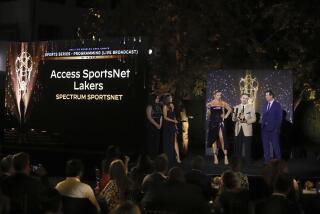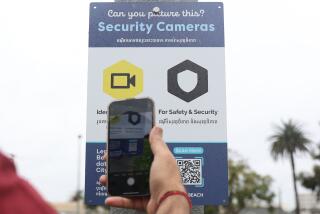Charter to sell L.A. TV viewing data
- Share via
Charter Communications Inc. said Wednesday that it would sell information it collects about the viewing preferences of 330,000 of its cable TV customers in the Los Angeles area.
Charter has agreed to provide Nielsen Co. with data from those subscribers’ digital set-top boxes in an effort to give advertisers and TV programmers a clearer picture of the channels and commercials people are watching.
Charter has subscribers in Long Beach, Pasadena, Glendale, Burbank, Malibu, Alhambra, Whittier and Riverside. They will be included in a pilot project with Nielsen that eventually could expand to other cities served by Charter, and perhaps to homes covered by other cable companies.
To protect the privacy of its customers, no identifying information will be included in the data, said Jim Heneghan, senior vice president for ad sales for Charter, which is based in St. Louis. The information would be turned over to Nielsen in enormous data files and categorized by five-digit ZIP Codes.
“There will be no way to trace the information back to any household,” Heneghan said in a phone interview. “It will go through our screeners so there is no personally identifiable information. All that they will have is the aggregated anonymous data.”
The information will show when a digital set-top box is turned on, the specific channel the box is tuned to and whether a show is being recorded. It will reveal when channels are switched and when the television is turned off.
Nielsen, however, has no way to tell how many people were watching TV or whether anyone was in the room. It also won’t distinguish between a TV being turned on and a digital video recorder switching on automatically to record a show when no one is home.
“We have valuable information on tune-in on a second-by-second basis,” Heneghan said. “Our market in Los Angeles represents a wonderful cross section of demographics. We will be able to report on how people consume television in Malibu and how they consume television in Riverside.”
Beginning in about two months, Nielsen will start selling the Charter data to its clients, primarily the television networks, cable channels and advertisers. Nielsen and Charter declined Wednesday to discuss financial details.
Despite Charter’s assurances that data about individual customers would be guarded, some privacy advocates expressed concern about the growing industry of selling details about consumer behavior.
“Where does it stop? The company could promise anonymity today and then change their privacy policies tomorrow,” said Beth Givens, director of the Privacy Rights Clearinghouse in San Diego.
Charter, she said, should obtain the permission of its customers before selling information to Nielsen.
“An opt-in needs to be offered from the very start,” she said. “Many people don’t pay attention to the privacy notices that they receive in the mail from cable companies.”
Industry executives, however, were happy that Nielsen had formed a partnership with a cable company in an effort to glean information from a larger pool of television viewers.
“This is exciting. It’s a step in the right direction,” said Cathleen Campe, a senior vice president of RPA, a Santa Monica ad firm that represents such clients as Honda, La-Z-Boy and Mandalay Bay Hotel & Casino. “It will be a bigger and richer sample than what Nielsen currently uses. It’s actually more like census data.”
Television and advertising executives for years have been prodding Nielsen to fine-tune its measurement methods to provide more accurate and detailed information about viewers’ preferences and whether they watch commercials.
Nielsen compiles its national TV ratings based on the selections of people who live in about 12,000 homes that make up Nielsen’s “people meter” sample. Nielsen uses complicated mathematical formulas to “weight” the sample to make it representative of the U.S. television viewing population.
About 800 homes in the Los Angeles region are included in Nielsen’s national sample.
The information gathered from Charter subscribers in Los Angeles should shed light on whether people watch commercials or channel surf. It should also provide information about the size of an audience for niche channels such as the Tennis Channel and how many people are watching high-definition channels.
The data could show how many commercials viewers watched during a break before they changed the channel.
“The Holy Grail for advertisers is getting the second-by-second data so that we know who is watching our commercials and, ultimately, who is responding to our messages,” Campe said.
Last summer, Charter began providing similar information streams to TNS Media Intelligence, a market research firm. But the Nielsen partnership is more significant because nearly all ad buyers and television networks subscribe to Nielsen’s ratings service. Nielsen could use the information to augment viewership data that it already sells.
“We are really excited to have this data from Los Angeles that we will be able to stitch together with our other Nielsen data sets,” said Jed Meyer, senior vice president of Nielsen DigitalPlus.
The ratings company is also interested in homing in on the data that Charter collected from the approximately 50 homes in Los Angeles that are already part of Nielsen’s sample. That would give Nielsen a second-by-second snapshot of the media habits of the viewers who have already given the company their identities, ages, incomes and gender.
“This will not only allow us to go to market with new and innovative data but will help us to build the future of audience measurement,” Meyer said.
--
More to Read
The biggest entertainment stories
Get our big stories about Hollywood, film, television, music, arts, culture and more right in your inbox as soon as they publish.
You may occasionally receive promotional content from the Los Angeles Times.











